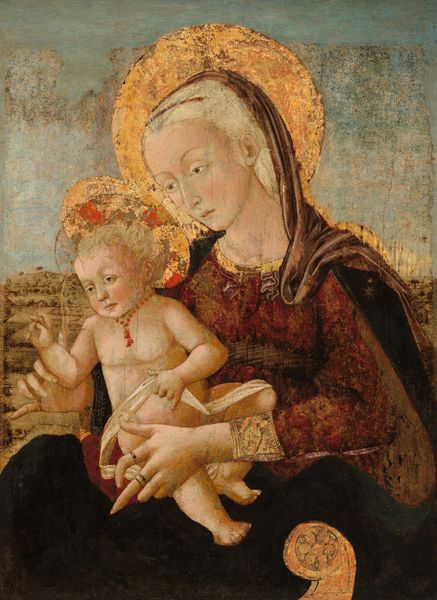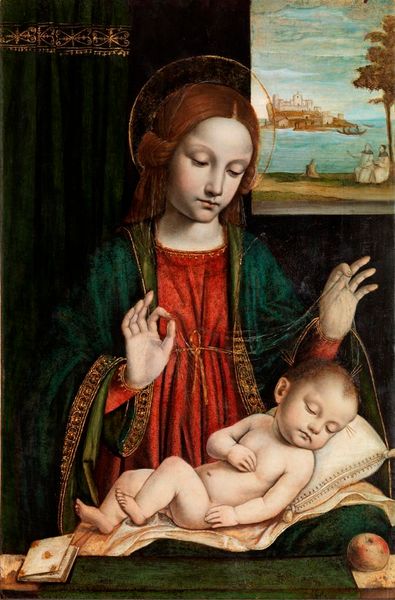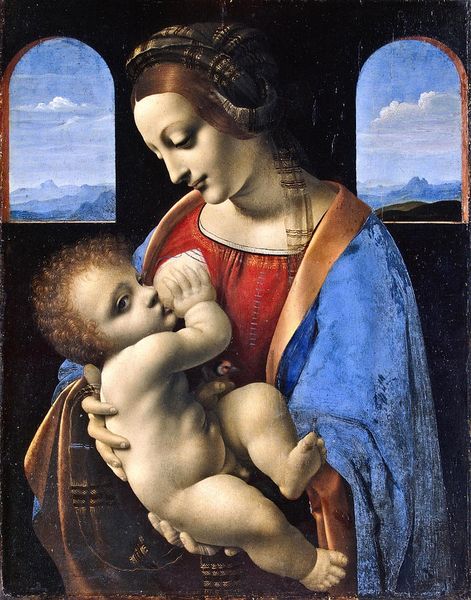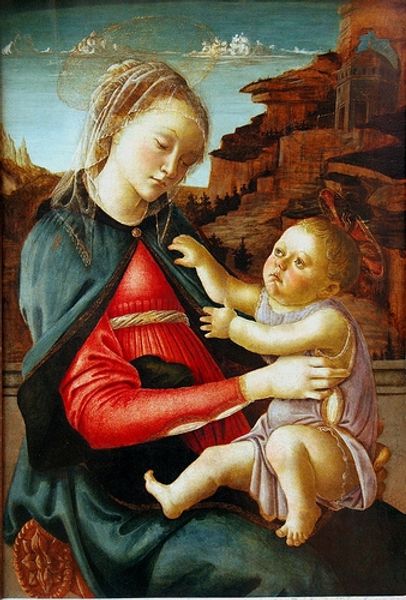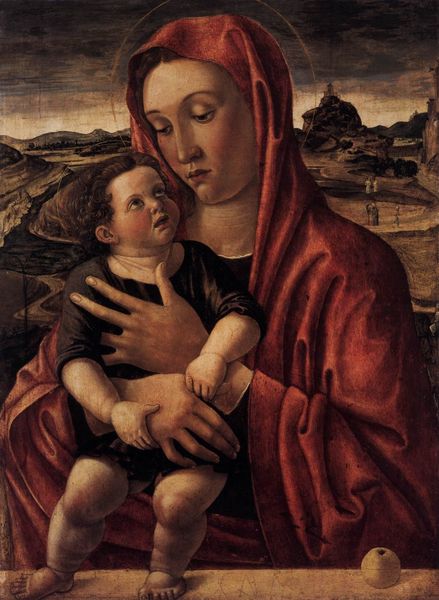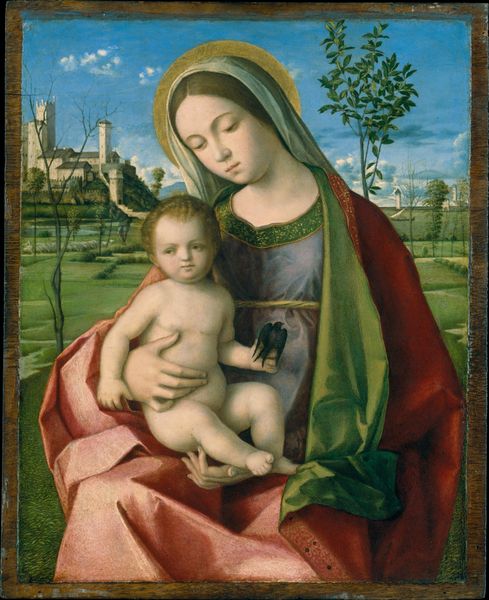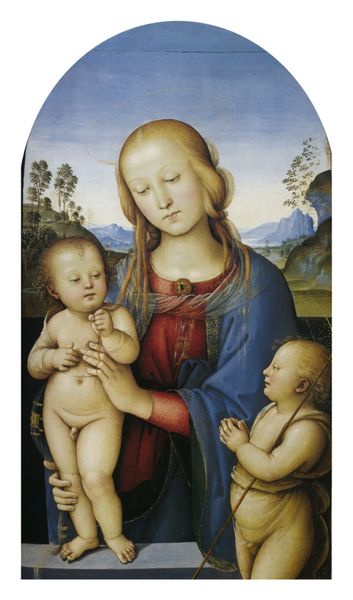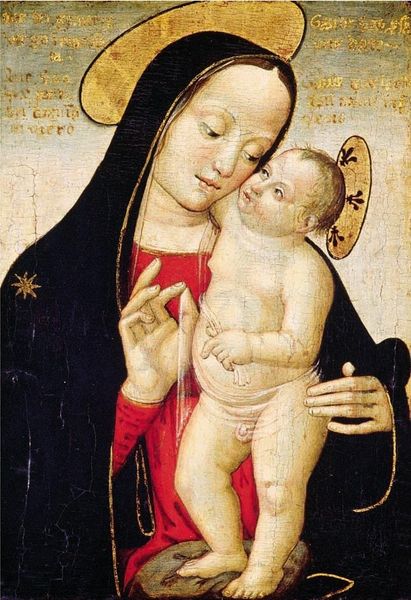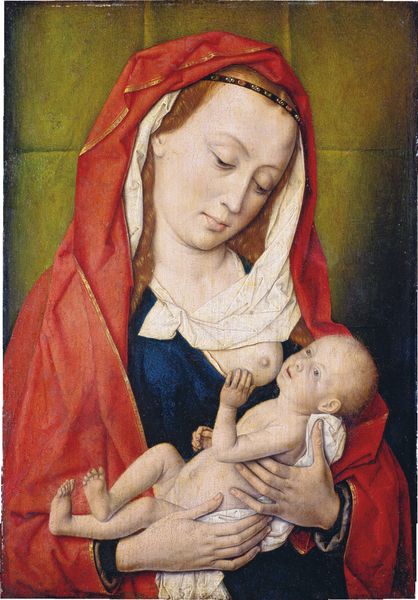
painting, oil-paint
#
portrait
#
painting
#
oil-paint
#
figuration
#
oil painting
#
academic-art
#
italian-renaissance
#
portrait art
Dimensions: 38 x 49.5 cm
Copyright: Public domain
Editor: This is Pinturicchio’s "Madonna with Writing Child and St. Jerome," painted around 1481 in oil. It feels so serene and almost studious. What kind of symbolic weight is being conveyed in this Renaissance painting? Curator: That's a perceptive observation. The serene mood and arrangement of figures invite us to consider deeper meanings embedded within the image. Saint Jerome, known for translating the Bible, signals intellectual pursuit. He holds a book, paralleling the Christ Child who is also shown writing, or perhaps, playfully interacting with a book. Do you think this juxtaposition is accidental? Editor: No, it feels very deliberate! Maybe it represents the passing of wisdom, an unbroken tradition? Is the child meant to actually *be* writing? Curator: Exactly! The open book held by the Madonna invites multiple interpretations, from prophecy and scripture to the divine word becoming human. Notice the presence of halos. Consider what is being reinforced through their visual symbolism. What connotations does the gold evoke? Editor: I see. The halos emphasize divinity. And the gold… I suppose that it indicates power, but maybe also, heavenly light? So this image is layering religious and humanist symbols? Curator: Precisely. By combining these potent symbols, Pinturicchio isn’t just depicting a scene; he's constructing a complex tapestry of meaning reflecting the values and intellectual ferment of the Italian Renaissance. The symbols were inherited and reinvented in a conscious manner. Editor: Wow, I didn't see all of that at first. It's amazing how much meaning can be packed into a single image. Curator: Indeed. Symbols are never mute; they reverberate with historical and cultural memory. I wonder what this image will mean centuries from now?
Comments
No comments
Be the first to comment and join the conversation on the ultimate creative platform.
